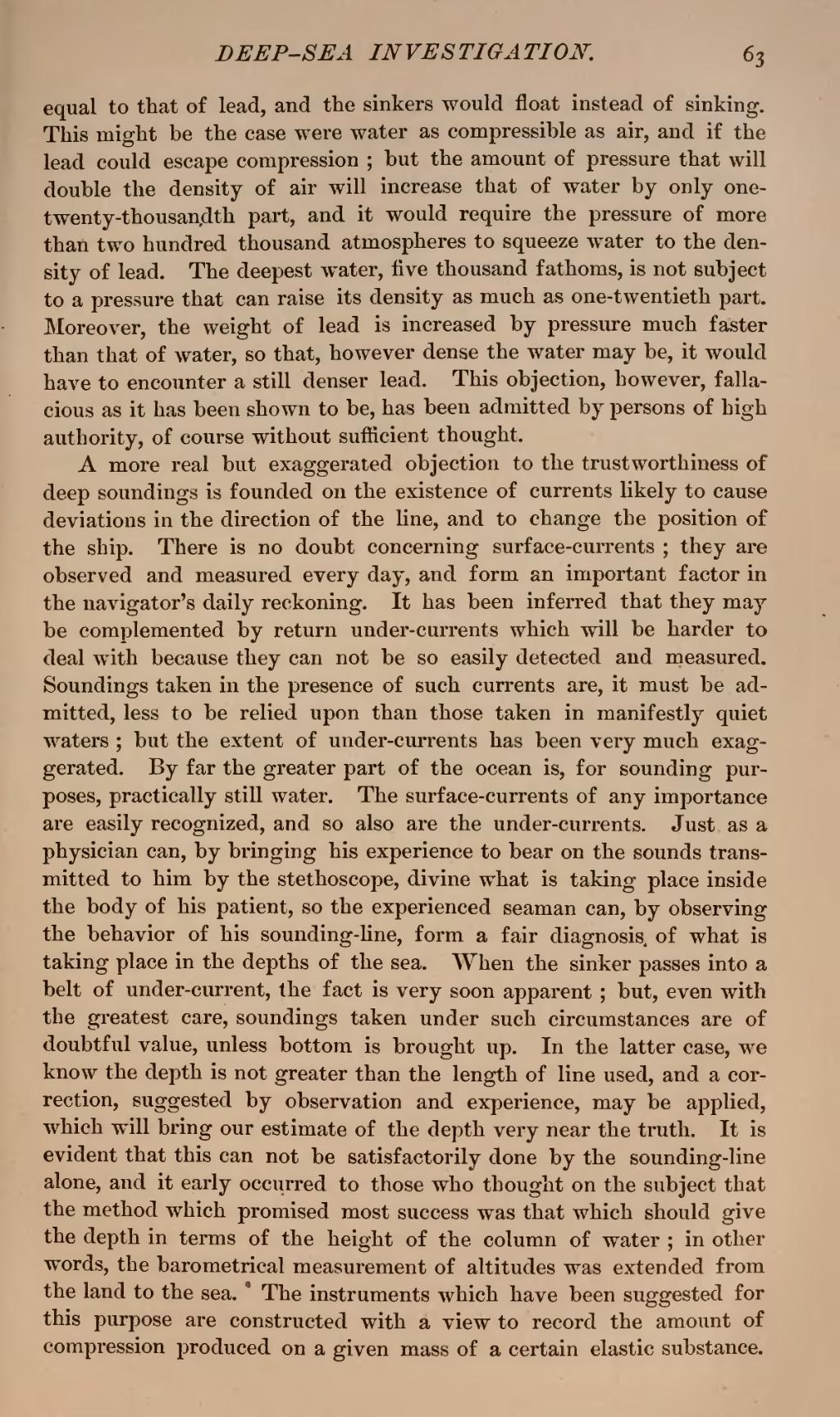equal to that of lead, and the sinkers would float instead of sinking. This might be the case were water as compressible as air, and if the lead could escape compression; but the amount of pressure that will double the density of air will increase that of water by only one twenty-thousandth part, and it would require the pressure of more than two hundred thousand atmospheres to squeeze water to the density of lead. The deepest water, five thousand fathoms, is not subject to a pressure that can raise its density as much as one-twentieth part. Moreover, the weight of lead is increased by pressure much faster than that of water, so that, however dense the water may be, it would have to encounter a still denser lead. This objection, however, fallacious as it has been shown to be, has been admitted by persons of high authority, of course without sufficient thought.
A more real but exaggerated objection to the trustworthiness of deep soundings is founded on the existence of currents likely to cause deviations in the direction of the line, and to change the position of the ship. There is no doubt concerning surface-currents; they are observed and measured every day, and form an important factor in the navigator's daily reckoning. It has been inferred that they may be complemented by return under-currents which will be harder to deal with because they can not be so easily detected and measured. Soundings taken in the presence of such currents are, it must be admitted, less to be relied upon than those taken in manifestly quiet waters; but the extent of under-currents has been very much exaggerated. By far the greater part of the ocean is, for sounding purposes, practically still water. The surface-currents of any importance are easily recognized, and so also are the under-currents. Just as a physician can, by bringing his experience to bear on the sounds transmitted to him by the stethoscope, divine what is taking place inside the body of his patient, so the experienced seaman can, by observing the behavior of his sounding-line, form a fair diagnosis of what is taking place in the depths of the sea. When the sinker passes into a belt of under-current, the fact is very soon apparent; but, even with the greatest care, soundings taken under such circumstances are of doubtful value, unless bottom is brought up. In the latter case, we know the depth is not greater than the length of line used, and a correction, suggested by observation and experience, may be applied, which will bring our estimate of the depth very near the truth. It is evident that this can not be satisfactorily done by the sounding-line alone, and it early occurred to those who thought on the subject that the method which promised most success was that which should give the depth in terms of the height of the column of water; in other words, the barometrical measurement of altitudes was extended from the land to the sea. The instruments which have been suggested for this purpose are constructed with a view to record the amount of compression produced on a given mass of a certain elastic substance.
